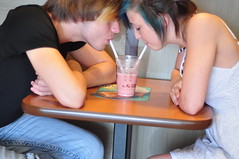 Amy Schalet’s new book Not Under My Roof explores teenage sexuality and teen pregnancy in the United States compared to the Netherlands.
Amy Schalet’s new book Not Under My Roof explores teenage sexuality and teen pregnancy in the United States compared to the Netherlands.
She wrote about this subject in Contexts in the Summer of 2010 in “Sex, Love, and Autonomy in the Teenage Sleepover.”
We created an in class survey in October 2010 to go along with this topic. See our post here.
Also, watch Amy’s interview on CNN, via Sociological Images.




